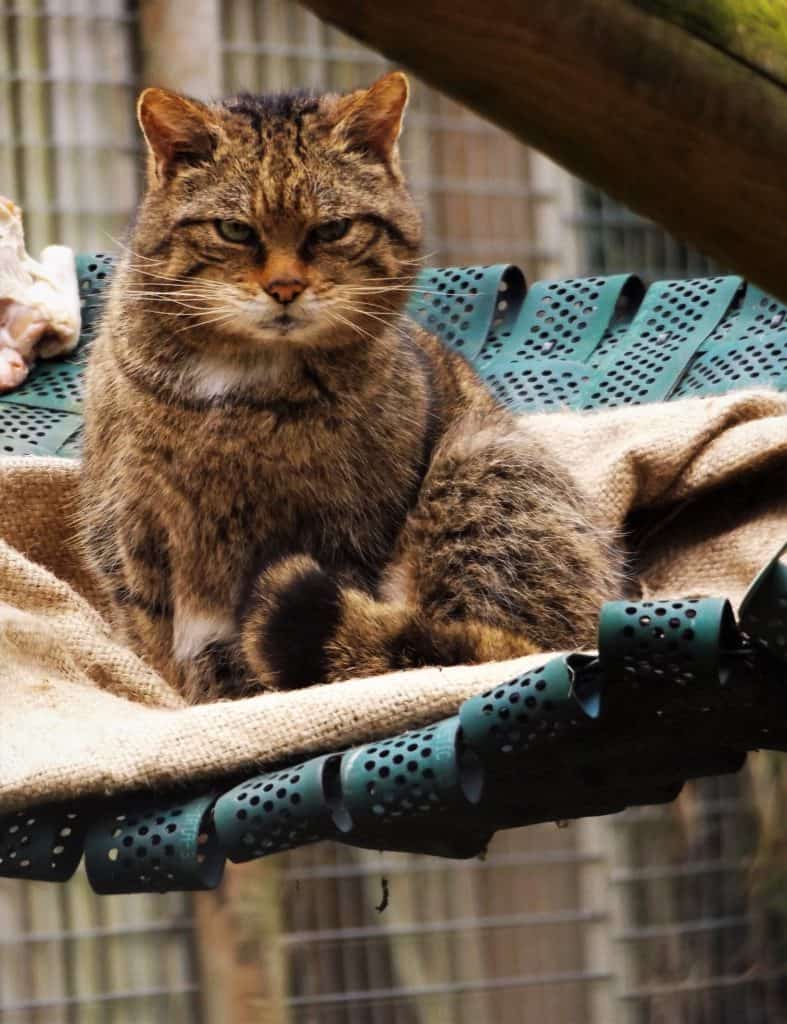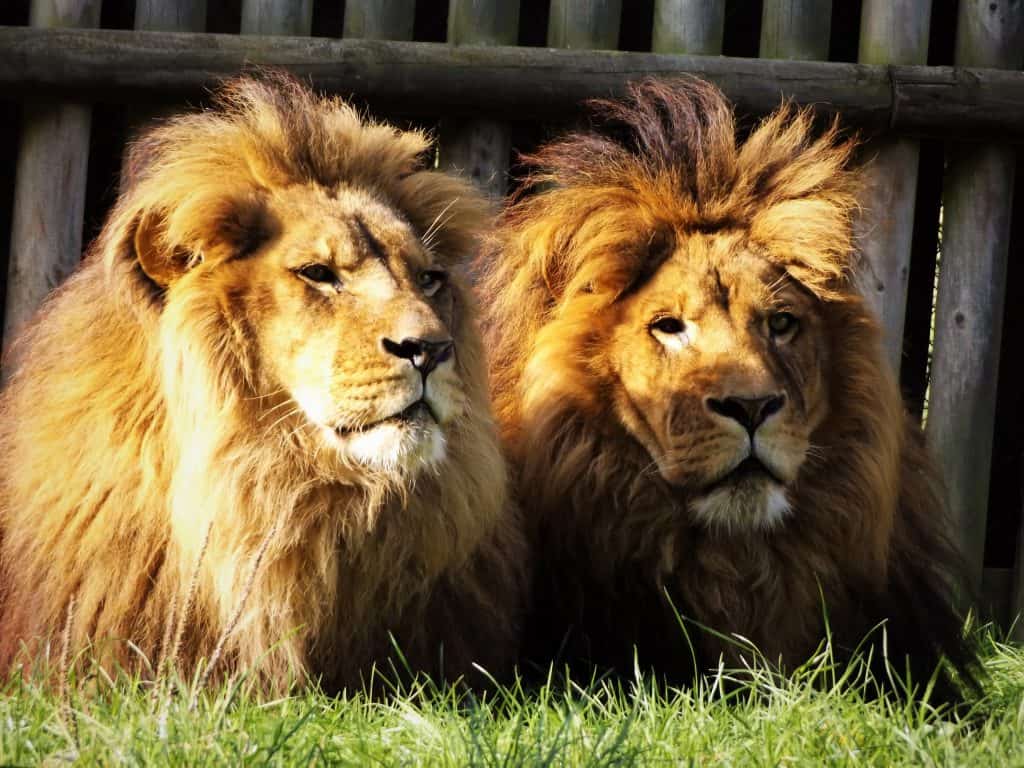Zoos are home to a wide variety of animals from mammals to reptiles. Each of these animals has adapted to survive in the wild. Some are so specialised they cannot live anywhere else! The world is made up of different habitats and each of them provide riches and struggles to the animals that live in them. An animal that can be found in most animal collections and often in more than one form, are cats.
Scottish Wildcat
Here at Wingham we have a large selection of felines that range from the small, Scottish wildcat mentioned in one of my previous blogs up to the tiger.

As mentioned in my blog ‘The highland tiger’, the Scottish wildcat resides where its name suggests in the wilds of Scotland and many of us are familiar with what sort of habitat can be found there. However, our other cats come from other parts of the world and each is unique in its own way.
Lions
Next door to the Scottish wildcats are the lions, Brutus and Clarence.

Lions from Africa and Asia are used to a much drier environment. Their tan coloured coat enables them to blend into the dry grass. They live in groups called prides and the male /males must fight off other males to keep their females.
The males are easily recognisable from the females by their impressive manes, which have often been believed to act like a shield to protect their necks during fights. However, researchers now believe its main purpose is as a display of strength. A bigger, darker mane shows they are producing more testosterone. This makes them more attractive to females and deters other males from taking them on. Here at the park you can see this difference between our boys as Clarence is much darker than his brother.
Tigers
A very popular pair here that always draw a crowd are Troy and Blade the tigers.

It is very easy to tell them apart from the lions as not only a different colour they have stripes. Our two boys are Bengal hybrid tigers which means they are part Bengal tiger and part another species.
Bengal tigers come from India which is still hot but the tigers habitat has a lot more trees. Plus, the grass can grow up to 8 feet tall. This is when the tiger’s stripes come in useful. Prey animals look out for danger and are well adapted themselves for surviving. The stripes help to break up the tiger’s outline making them more difficult to spot especially creeping through the long grass or trees.
Unlike the lions and indeed many cats, tigers actually enjoy water. They will often spend time playing in it, something Troy and Blade will be happy to show you as even now they can be seen getting into their pool.

This love of water is very useful as the monsoon season in India can last from June to September flooding large areas. Some of the animals they hunt are also adapted so it pays to be able to pursue prey into water.
Lynx
Tigers can also be found in very cold climates but I would like to mention one individual who truly excels in snow, the Lynx. Up at little Himalaya, one of the newer areas of the park, you will find Roots.

However, you will have to find him as one of his favourite pastimes is to hide somewhere in his enclosure and watch people without them knowing! Roots is a Eurasian Lynx, who you may remember from my blog ‘Britain’s lost carnivores‘. While they can no longer be found in Britain they still inhabit North, East and Central Europe across to Asia and Siberia. The lynx also prospers in Canada, another very cold climate.
The preferred habitat for the lynx is temperate or boreal forests which are usually covered in snow. They can also be found as high up as 5,500 metres. This, however, does not pose a problem for the lynx; they have dense fur which keeps them warm. Their paws are large and have fur underneath, which when spread out act like snowshoes helping them move across deep snow with ease. Very useful when hunting prey like snowshoe hares which are also adept on snow. The fur underneath their paws gives them better control as the hare will turn quickly to avoid getting caught.
Like with all the cats their fur is designed for camouflage. However, unlike the tiger and lion theirs changes with the season. In summer they can be a reddish-brown colour which is shorter, while in winter it becomes thicker and lightens to a greyish-brown colour. They have large ears with tufts of fur on top which helps with hearing their prey which may be concealed.
Our Domestic Companions
While I have talked about our cats and how they are well suited to the wild, possibly the cat who needs an even bigger mention is yours, the domestic cat. These felines have lived alongside humans for several thousand years and have become perfectly suited to living in cities and towns. They are a popular sight on farms as they stop rodent numbers getting out of control. The number of different cat breeds is between 40 and 70 as it depends on who you ask. These come with different coat patterns and colours, short and long haired and even bald. Their sizes range as well although, they do not get as big as most wild counterparts. Their greatest adaptation is probably their ability to interact with us. Even the most unsocial person can feel at home with a cat.
If you are a cat lover come and visit our tigers, lions, wildcats and lynx soon as well as other cat species including the cheetah, jaguar and clouded leopard!


